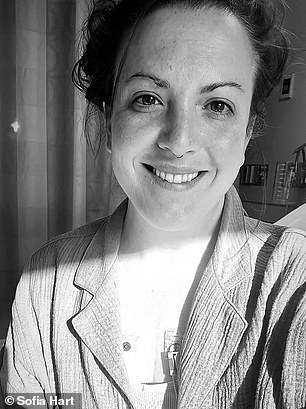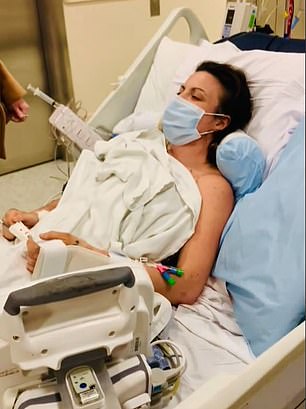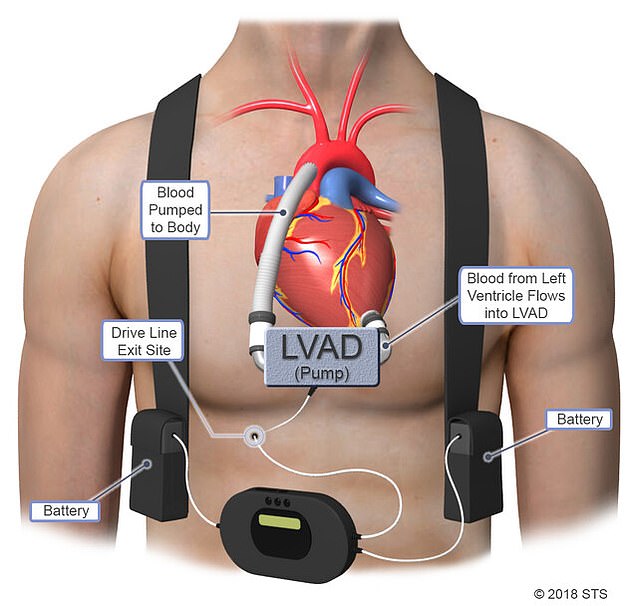‘I’ve lived for a year without a PULSE… I run on batteries’ Massachusetts woman, 30, with rare genetic condition is being kept alive by mechanical implant as she waits anxiously for a donor to give her a new heart
- Sofia Hart has irreversible dilated cardiomyopathy, just like her twin sister
- She lives with a device called an LVAD to keep her alive until a heart transplant
- READ MORE: Doctors discover NEW type of heart disease called CKM
A Massachusetts woman with a rare genetic heart condition has no pulse and says she’s “running on batteries.”
Sofia Hart, 30, has irreversible dilated cardiomyopathy – a disease of the heart muscle in which one of the ventricles does not work as well, which can lead to heart failure.
Mrs. Hart uses a life-saving medical device to keep her heart pumping while she waits for a heart transplant.
As many as one in 500 American adults have cardiomyopathy – a more general term for conditions related to the heart muscle, but irreversible dilated cardiomyopathy is rarer.


Sofia Hart on her 30th birthday in May 2023 (photo left). She lives with a left ventricular assist device (LVAD) while she awaits a heart transplant. She is in the photo having the device installed in the hospital, even though she is 29

An LVAD keeps blood flowing through the body by mechanically pumping the left side of the heart
Ms Hart discovered she had the condition in the summer of 2022 while working on a horse farm.
She said PEOPLE: ‘I really started to get sore and so tired. It’s like a tiredness that you can’t really describe. I wasn’t tired in my head, but my body was so tired.’
Her twin sister, Olivia, was born with the same rare genetic mutation, but no one realized Mrs. Hart also had it until she became ill.
Ms. Hart’s fatigue initially led her to believe she had Lyme disease because she had been working outside and could easily have been bitten by a tick. She took a Lyme test at a walk-in clinic.
Olivia, who was working at the hospital at the time, broke the news to her sister.
“My sister said, ‘You don’t have Lyme disease – and we really wish you did.’
Olivia had suffered from heart failure seven years earlier and had to get an LVAD device to help her until she received a heart transplant in 2016.
A left ventricular assist device (LVAD) keeps blood flowing through the body by mechanically pumping the left side of the heart.
Mrs. Hart received the same treatment at age 29 as her sister did at age 22: She lived with an LVAD until a transplant was available.
At home in Boston, Mrs. Hart is plugged into an electrical outlet to power the device.
She told PEOPLE, “That cord is quite long, and I’ve mastered living in places where I can get around on that cord.”
When she goes out, the LVAD can be powered by two batteries, and Ms. Hart makes sure she always has spare batteries with her.
